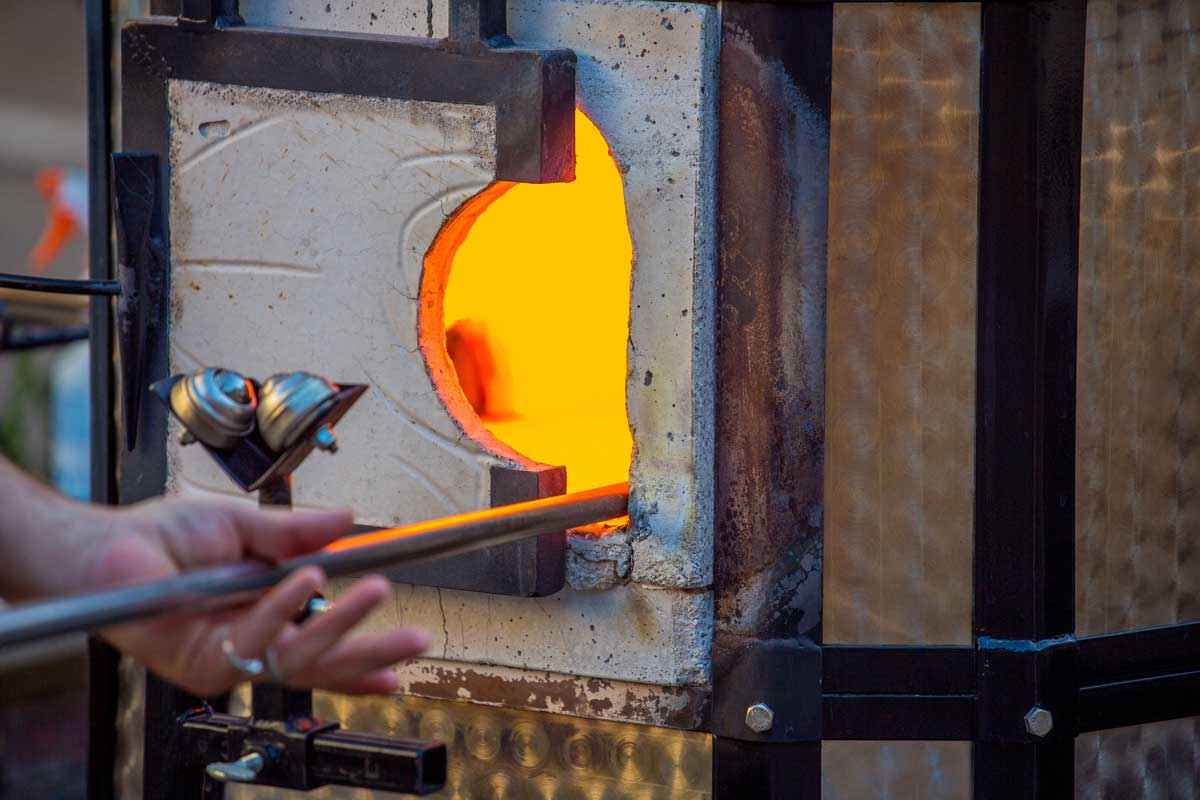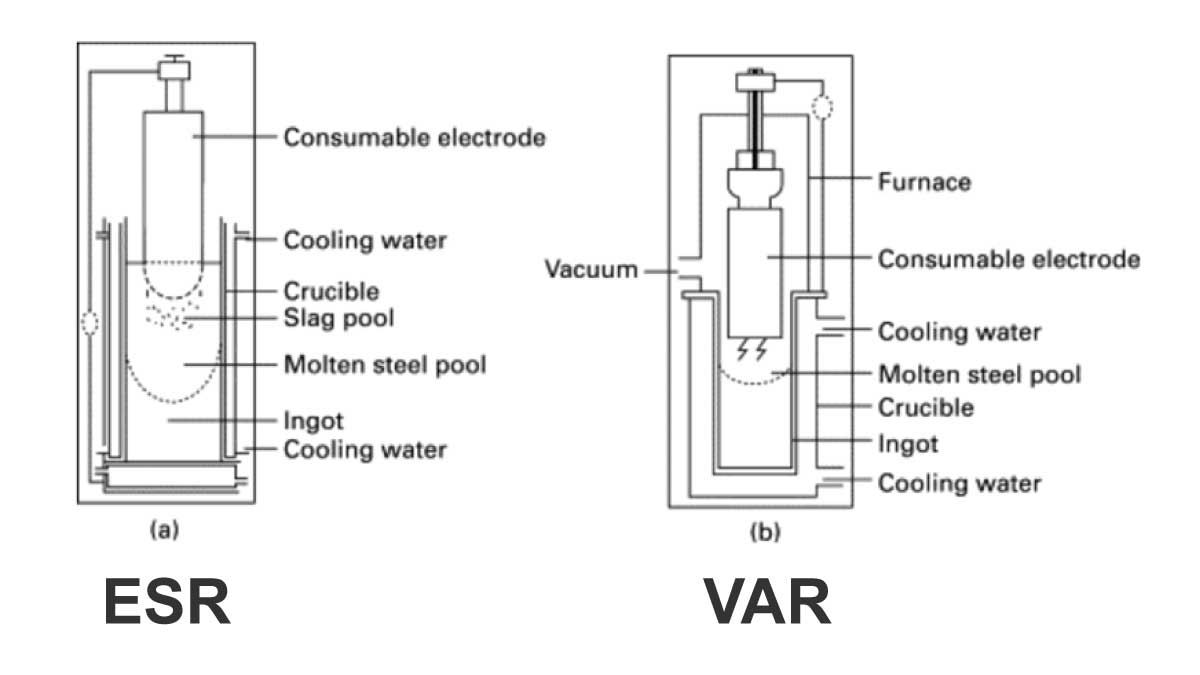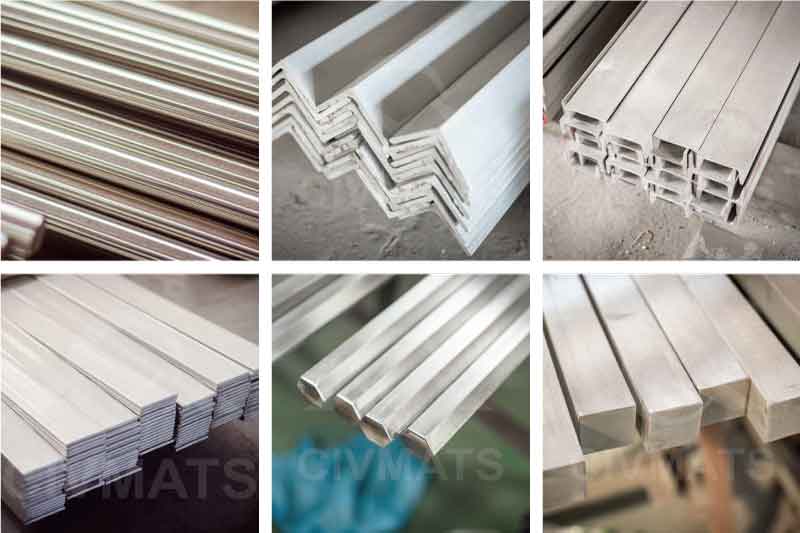Overview
For stainless steel materials applied for high-end industries such as aerospace industry, the melting methods are always differentiated from conventional melting methods like intermediate frequency furnace melting or AOD melting. Instead, VIM, ESR and VAR will be required for pursuit of higher steel purity and better mechanical properties.
Actually, for high-end stainless steel materials used in aerospace, VIM, ESR or VAR is seldom used alone, but commonly used with two of the melting methods combined together such as double-melt VIM + ESR, or VIM + VAR. Specifications such as SAE AMS 5659, SAE AMS5629 has clearly pointed out the melting methods for production. For certain military use raw materials, triple-melt VIM+ESR+VAR can be involved to achieve demanding requirements on quality. Such being the case, it is necessary to get a basic knowledge of these three melting methods.

VIM (Vacuum Induction Melting)
VIM involves inducing electrical eddy currents in the metal via electromagnetic induction to heat and melt the furnace charge under a vacuum environment. This method gives the best control over chemical compositions for enhanced steel purity. The hydrogen, oxygen and nitrogen contained in the air can be separated from the melt under vacuum. With the electromagnetic stirring comes improved homogeneity of the melt. Meanwhile, reactants can be continuously brough to the melt-vacuum interface, paving way for subsequent refining process. As gases and nonmetallic inclusions are volatilized and precipitated, the mechanical properties of the steel can also be improved significantly.
VIM furnace is an important and must-have smelting equipment for high-end stainless steels, especially for those that contain many reactive elements such as aluminum and titanium. VIM allows for using reactive elements while keeping the non-metallic inclusions at bay.
ESR (Electroslag Remelting)
ESR refers to melting an electrode obtained from VIM or some other process under air or gas through the heat generated by electrical resistance in a slag. This technique involves two patterns, slag-metal reaction & gas slag reaction. The droplets of electrode material flows through a reactive slag of lower density into a cooled copper crucible. By reacting with the slag, the harmful element sulphur in the ingot can be controlled to a low content. This liquid metal refining is also known as desulfurization. Meanwhile, the controlled solidification process can uniform the chemical compositions and improve the homogeneity and mechanical properties of the final ingot.
ESR refers to melting an electrode obtained from VIM or some other process under air or gas through the heat generated by electrical resistance in a slag. This technique involves two patterns, slag-metal reaction & gas slag reaction. The droplets of electrode material flows through a reactive slag of lower density into a cooled copper crucible. By reacting with the slag, the harmful element sulphur in the ingot can be controlled to a low content. This liquid metal refining is also known as desulfurization. Meanwhile, the controlled solidification process can uniform the chemical compositions and improve the homogeneity and mechanical properties of the final ingot.
VAR (Vacuum Arc Remelting)
VAR is the process where an electrode produced by VIM, ESR or differently is melted under vacuum through an electric arc and again cast into a cooled cooper crucible. It’s quite similar to ESR as both techniques are consumable electrode melting processes and always remelting process entails either of the two. However, the main difference between VAR and ESR is the existence of a slag. As VAR is short of slag, there is no chemical refinement involved. Due to melting under vacuum, VAR keeps low of dissolved gases like oxygen, hydrogen and nitrogen, and also keeps the high-vapor-pressure elements like lead or tin to the minimum.
The main purpose of VAR is a highly homogeneous material produced from controlled melting and solidification process. VAR can reduce loss of active elements like Al and Ti. The controlled solidification process can significantly improve the purity, uniformity, anti-fatigue and ductility. VAR is preferred to special stainless steels, nickel alloys and active and refractory metals like Ti, Mo & Nb.

In general, the VIM always comes as the primary melting when double melt or triple-melt is required. Recycled material, scrap from the production process, master alloys and pure metals are melted through VIM to obtain the right chemistry. Under Vacuum circumstance, air-contained gases are minimized and reactive elements like aluminum can be used while avoiding the non-metallic inclusions. VIM gives semi-final product used for remelting like ESR or VAR. VAR is comparably less complex and easier for control than ESR. ESR and VAR, as two forms of vertical continuous casting, are applied to enhance the quality of primary ingot obtained from VIM. They lead to highly refined stainless steel or other high alloys with less segregation, fewer defects and enhanced mechanical properties. If you are in the market for high quality stainless steels like 13-8 MO PH AMS 5629, 15-5PH AMS 5659 used for aerospace industry, armor applications and the like, welcome to CIVMATS CO. LIMITED. Our sales are your free consultant. We aim for the best for you!

